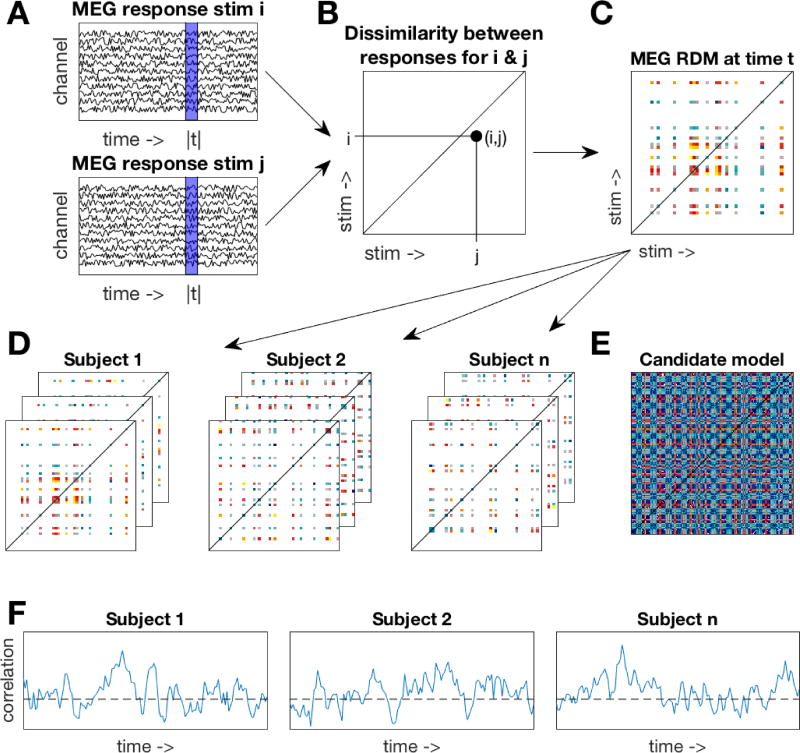Figure 1. Methods overview.
A. A 25msec sliding window approach was used. At one time window (blue area), MEG responses to two stimuli were extracted. B. A dissimilarity value between MEG responses was computed and stored in an N×N matrix. C. Repeating the process over all stimuli yielded a subject-specific representational dissimilarity matrix (RDM). Note that each subject saw a subset of the stimuli, resulting in only a partially filled RDM. D. A time-varying RDM was created for each subject by repeating the process over all time points. E. One example candidate model RDM. Multiple candidate models were constructed from the behavioral ratings and HMAX model. F. For each subject, their time-varying RDM was correlated to the candidate model (restricted to their respective stimulus subset) resulting in a time-varying correlation with the candidate model. The time-varying correlations were assessed for significance at the group level.

